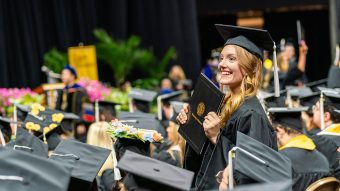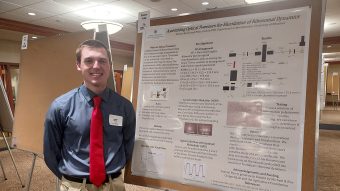
Teachers tend — at least in class — to be a chatty bunch. In sage-on-the-stage fashion, they lecture on their beloved topics. In guide-on-the-side mode, they question, coax, wheedle and cajole their classes toward discovery. But in a springtime Mizzou ritual, Jim Schatz gets to see Mizzou’s best teachers at full stop.
Schatz has the happy task of accompanying MU’s chancellor on unannounced visits to the classrooms of teachers who have won the William T. Kemper Fellowship for Teaching Excellence. “The Kemper” has been Mizzou’s top teaching honor since it began in 1991. Schatz is regional chairman of Commerce Bank, which manages the foundation of the late Mr. Kemper, a Mizzou alumnus, Kansas City banker and philanthropist.
In early April, Schatz and Chancellor R. Bowen Loftin surprised five suddenly-speechless teachers from across Mizzou’s academic disciplines and presented them with the award. “The classrooms vary from large halls with hundreds of students to small seminars,” Schatz says. “Regardless, the spontaneity of students’ response is so clear when their professor is recognized. They stand, applaud and cheer. They know the quality of their professor. It’s a highlight of the year for me.”
Living Up to the Title
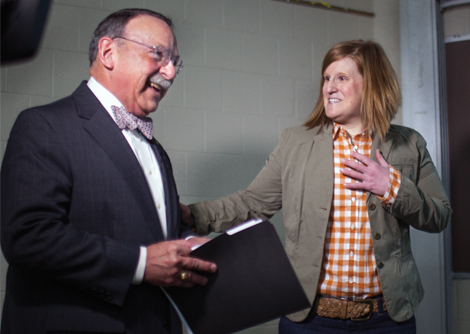
It’s a career highlight for the four former Kemper recipients quoted below. They appreciate the prestige and the $10,000 prize that come with the award. But for Kemper winner Leigh Neier and others, winning the award also prompted a set of self-imposed responsibilities.
“The Kemper continues to inspire me every day,” says Neier, who has taught in the College of Education since 2010. “It influences the way I prioritize the needs of students inside and outside the classroom. I try to connect with them in as many places as I can and create possibilities to learn with them. My students have always been my priority, but it’s a higher responsibility now that I’m a Kemper winner.” For example, Neier reworked her schedule to attend the chancellor’s listening session with students in the wake of the shooting of Michael Brown in Ferguson, Missouri. “While I did not plan to speak at the forum, I felt like I needed to be there to represent the teaching community at MU.”
Diverging Paths
None of the lauded professors in this story grew up planning to teach at a university. Neier realized that she liked speaking in front of people and liked leadership roles, beginning with her first job as a swim-team coach. Lynda Kraxberger, associate dean of journalism, noticed, as a young TV producer, that she had a knack (and a liking) for explaining the ins and outs of newscasting to interns. Jim Spain, vice provost for undergraduate studies, started at MU as a dairy researcher for MU Extension, was eventually assigned to teach a course and grew to excel in the classroom. Anand Prahlad, professor of English, says he became a teacher almost as a matter of necessity because of a disability.
The Right Fit
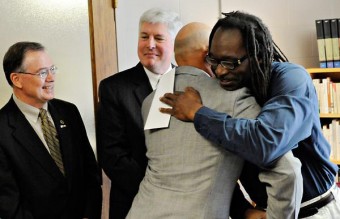
Prahlad started leading Sunday-school classes at age 16, taught poetry to elementary students and penitentiary inmates as an undergraduate, studied education (along with poetry and folklore) in graduate school, and taught elementary students for seven years before arriving at Mizzou in 1990. Despite this track record, he never aspired to teaching.
“For me, the issue was more what was possible, what I was able to do. Having Asperger’s, an autism spectrum disorder, there were a lot of careers I could not do because I cannot stay socially connected to people for extended periods. I need a lot of alone time. I need the structure of certain routines.” Teaching turned out to be a good fit for Prahlad, who recently completed The Secret Life of a Black Aspie, a memoir about living with disability.
“Teaching is also a way I can connect with others, to really listen and get a sense of them,” Prahlad says. “I love that part of the job because my sense of students is that they are really interesting people, and I get to be around them.”
On-the-Job Learning
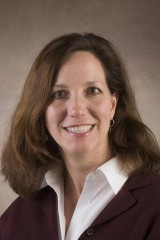
That desire and talent for connection is common to the Fab Four in this article. Kraxberger, for example, armed with a master’s degree and five years of professional experience, spent her first seven years at MU in a non-tenure-track faculty position at KOMU-TV. She was on site teaching students how to report and broadcast news. Kraxberger says it was — and still is — unusual in journalism education to have a commercial TV station at which students are integrated into almost every aspect of the newsroom. “I worked with students on deadline to finish their stories, and I saw them 10 or 20 hours a week, which can really foster a mentor-mentee relationship. It was a great teaching experience because I could see the impact immediately. I say jokingly that my thumbprint is on every student who went through the newsroom from 1993 to 2000.”
Human Connections

Empathy is at the core of Neier’s teaching philosophy. That can be tough when at an 8 a.m. class on Monday morning a student looks to be hiding at the back of the lecture hall. It’s easy to take it personally and assume their apathy, she says. “But that would affect who I am as an instructor. Instead, I try to approach it from an empathetic mindset and assume good will from students. Maybe they have a problem at home or work three jobs and did their best just to get there.” She tries to understand students’ lives outside the classroom.
Enthusiasm is a key word for Spain, a dairy scientist who has been at Mizzou since 1990. “Students don’t care what you know until they know that you care.” The self-described “brown-cow, green-grass, white-milk guy” is adamant about imparting more than his subject to students. “They know I really want them to be there and really care about this dairy stuff.”
Symbiosis
All these teachers care enough to foster a classroom atmosphere they believe to be conducive to learning. Yes, they lecture at times. But they are far more interested in guiding discussions where all feel welcome, even moved, to contribute. “Reciprocity is huge,” Neier says.
“At any given moment, I might be the learner, and student might be teacher. I love to see students get fired up when making an argument, and I get fired up to see how they feel about their own learning.” - Leigh Neier

Even when the topics are as uncomfortable as mental illness or cultural disparities, she says, discovery can reign in such moments if the stage is set properly. “Students can move from being in their comfort zone to learning about others and about themselves," Neier says. "People can feel safe taking those leaps.”
Prahlad sets the tone by holding students’ human dignity high. As a minority, and a person with a disability who grew up in a lower-class household, he comes by this sensitivity honestly. His methods are subtle. Sometimes it’s just his tone of voice that does the work. Other times, a remark reassures students that, although he is the professor, they are equal as human beings. “Their thoughts matter as much as mine,” he says. “Often they are surprised by this. But part of what excites me is hearing their thoughts.” This atmosphere fosters high motivation for Prahlad and his students alike, he says.
Imperfection
These teachers’ bad days — occasional, yet instructive — generally involve some lapse in focus on the class. For instance, Kraxberger arrived at her broadcast reporting class one day to discover that a complicated audio-visual setup she carefully and dutifully performed the previous day had been dismantled. After uttering a word she could never say on the air, she composed herself and told students about the value of rolling with the circumstances.
During one of Neier’s lively class discussions, a pair of students on opposing sides of a divisive issue took over. “All of a sudden, the discussion turned political. It was almost like a tennis match, with all 150 students looking back and forth at each student as it heated up. I allowed myself to become wrapped up in the discussion. I remember feeling that I let the conversation get out of control and how important it is to stay on top of every word so I can jump in if need be.”
One semester about a decade ago, Spain spent substantial time trying to inspire a few unmotivated students. In retrospect, he says he felt that the other students got less of his energy than they deserved. “I regret that, and I resolved never to let it happen again,” he says. For him, it’s a matter of trust. “When I interact with families dropping their sons and daughters with us, I always thank them for trusting us. For those to whom much is given, much is expected. The Kemper confirmed that for me.”
Teaching the Whole Person
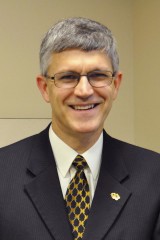
Beyond the subject matter of individual courses or majors, these teachers have their eyes on a larger prize in the trajectory of student learning over the span of a college education. Neier hopes students will internalize MU’s core values of respect, responsibility, discovery and excellence. Spain and others hope to see learning become a habit. “The most helpful thing we do is to help students develop a sense of how they go about learning, thinking about things, reaching conclusions, making decisions, recognizing what they don’t know, and recognizing the value of opinions that differ from theirs.”
Spain also hopes students discover a meaningful career path. Sometimes his job is helping students deal with the facts of academic life. “Maybe they came to study animal science but their heart lies in music. So go do music,” he says. “That happens.” Those can be difficult conversations.
The rewards, however, can be great. “There are times when you think, ‘Wow, maybe I am OK at this.’” Neier says. Recently, she ran into a colleague who has some of her students in his social-studies education course. As part of an exercise, he asked students to list their heroes. “He told me that many of them put my name on their lists,” Neier says. “My heart stopped. It was an incredibly gratifying moment.”


